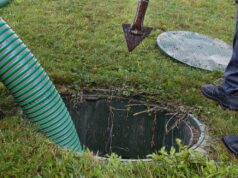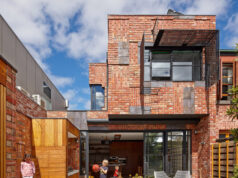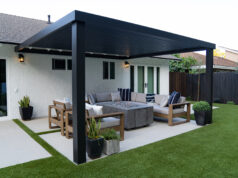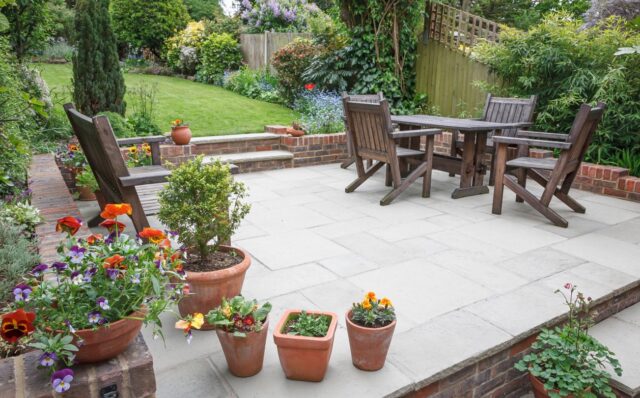
An unpaved driveway or sidewalk is the last thing you’d wish for in your compound. Time and weather can lead to cracks and warps. This may result in water pooling in the created depressions. You’ll have to battle with mud whenever it rains. Weeds may also invade, making it challenging to walk or drive on the pavement. Pavers can save you from these woes.
Outdoor pavements, if designed and maintained well, can significantly boost your home’s curb appeal. You can install them on patios, pathways, pizza ovens, and poolscapes. The right mix of color, texture, and shapes boosts your outdoor aesthetics, while the material choice influences durability and functionality.
This article guides you through critical considerations for pavement materials.
The options
Below are some popular material choices for pavers:
- Concrete
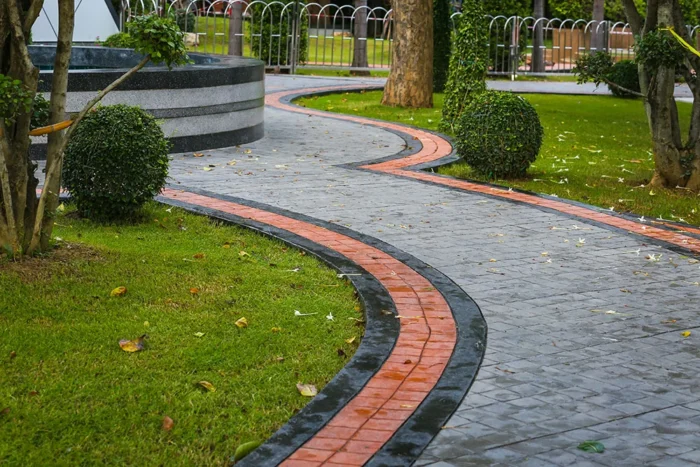
Concrete pavers are your go-to option if your chief concerns are strength and affordability. They can withstand heavy foot traffic and sufficiently hold the weight of vehicles, typically lasting up to 30 to 40 years. Their inexpensiveness allows you to cover large areas without going bankrupt. Furthermore, concrete can be customized into numerous shapes, making it possible to develop unique designs. And occasional sealing may be all that’s needed to maintain the good looks, thus, a practical choice for many homeowners.
- Bricks
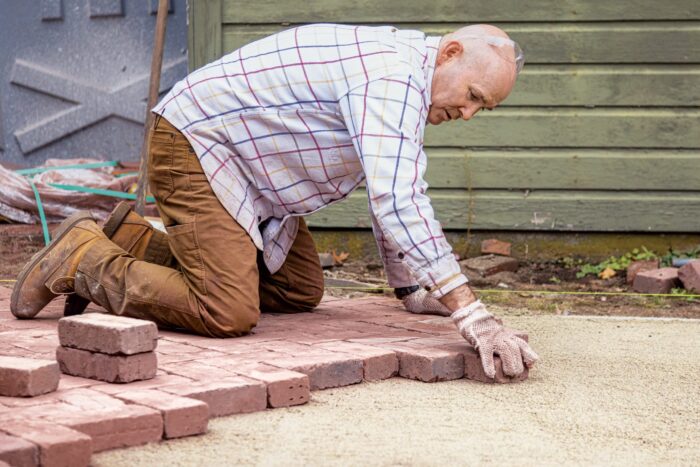
Brick pavers have been in use for centuries. Installing them awakens memories of days gone by. Their rustic charm, warmth, and characters are to die for.
One unique characteristic of brick pavers is slip resistance, making them ideal for pool sides or damp places. Natural weathering enhances their allure through oxidation, which deposits a variegated coat on its surface. Installing brick pavers can be tasking, but the amazing results are worth the effort.
- Natural stone
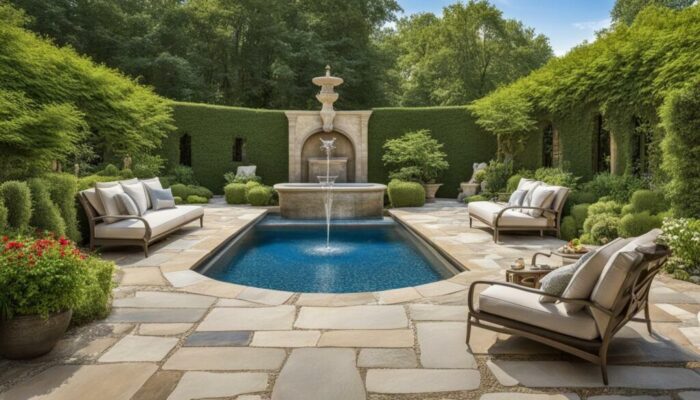
Natural rocks like granite, limestone, and sandstone can be cut into small blocks for use as pavers. Granite is an exceptionally strong rock, making it ideal for heavy traffic. Its freckled hue makes it excellent for high-end applications. Sandstone’s earthy tones make your outdoors blend seamlessly with nature. Limestone also offers a timeless appeal, bringing a unique ambiance to your outdoors. Standard lengths of limestone slabs range from 1500 to 1850 mm, making them ideal for installation in large spaces. To maintain their beauty and longevity, ensure you regularly apply a sealcoat.
- New trends
Besides the basic materials mentioned above, you’d want to follow emerging trends in the paving industry. Outdoor porcelain pavers are gaining traction because of their stain resistance and sleek look, perfect for modern homes.
Sustainability options include recycled rubber, reclaimed wood, and eco-friendly concrete. These materials help preserve earth’s natural resources.
Permeable pavers are also a popular choice today, especially in areas with high precipitation. They allow rainwater to percolate, preventing excessive runoff, which may cause havoc. They’re also affordable, with an average cost of USD$4 to USD$30 per square foot, depending on the type.
Matching pavers to your needs
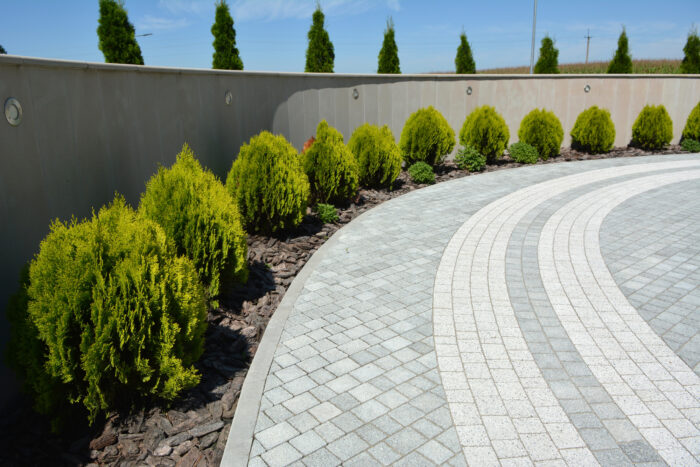
Beauty isn’t the only consideration when selecting paver solutions. Other factors like lifestyle, design aspirations, and budget are also critical.
- Lifestyle considerations
If you fancy entertainment and your home gets a constant stream of visitors, you’d want durable pavers that can withstand high foot traffic. For poolside installation, go for pavers with high slip and heat resistance to ensure safety when playing or relaxing after taking a dip. Garden walkways, on the other hand, look attractive with natural stones. For patios and family play areas, you may want to mix colors and textures for a more active and engaging space.
- Climate concerns
Fluctuating temperatures cause intermittent freezing and thawing, leading to cracks. In such areas, you’re better off with pavers that are resistant to such issues, including those made of natural stone, concrete, and porcelain. For areas with extreme sun exposure, consider installing UV-resistant paving blocks to prevent fading. And if your locale is generally wet, porous pavers are your best bet.
- Budget
Besides installation costs, factor in the maintenance expenses you’ll incur over the pavement’s lifetime. It’d be wiser to pay a bit more initially if you’re sure the maintenance needs of the selected material are minimal. You’d also want to compare professional versus DIY installation. For DIY projects, make sure you learn the ropes in-depth for a structurally and aesthetically sound installation.
- Design
Creativity in pavement installation helps create visual interest. Use contrasting hues and textures for a magical allure. Add borders and edging to define spaces. Lighting also helps boost the nighttime ambiance of your outdoor space.
Conclusion
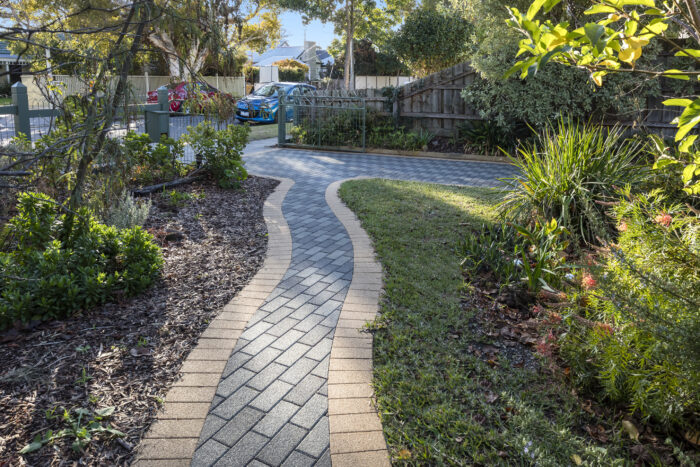
The right paver solution can transform your property’s outdoors into a space that expresses your sense of style and meets your everyday needs. For extensive areas, professional consultation is critical. Experts can offer customized insights on material choice and pavement design. For smaller, less complex installations, DIY is a welcome option. Just make a point of exploring tutorials for a fantastic result.

